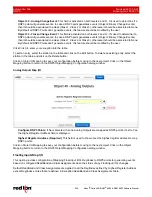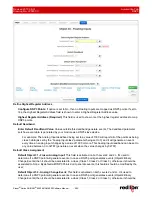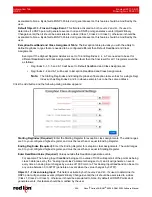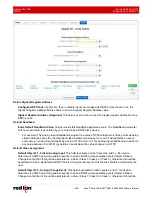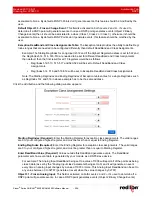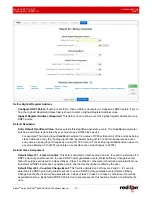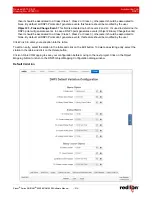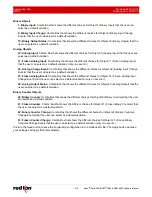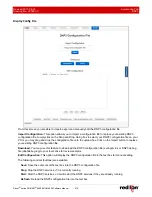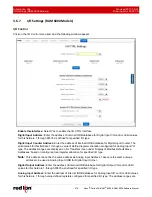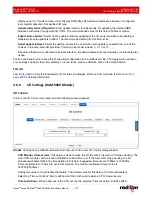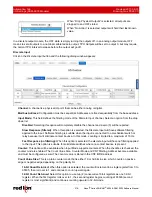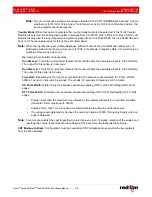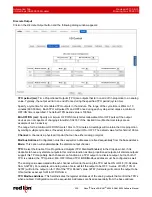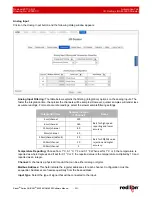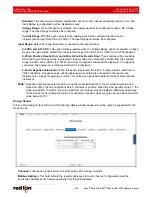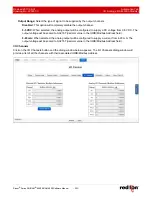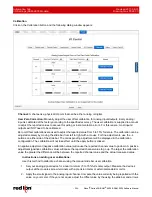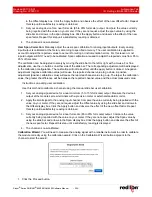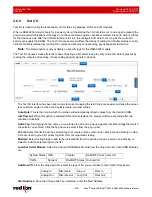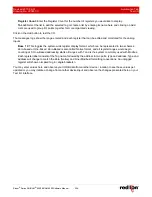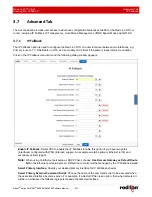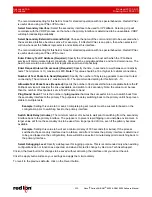
Automation Tab
Revised 2017-08-31
I/O Settings (RAM-9000 Models)
Drawing No. LP0997-C
- 218 -
Sixnet
®
Series SN/RAM
®
6000 & RAM 9000 Software Manual
When “Drop Physical Outputs” is selected, all outputs are
dropped to and OFF stated.
When “No Action” is selected, outputs will hold their last known
value.
In a discrete output module, the OFF state is simply turning the outputs off, in an analog output module, OFF
means to set all outputs to a nominal calibrated zero output. TPO Outputs will be set to output 0, but may require
the normal TPO interval to elapse before the output will go off.
Discrete Input
Click on the
Discrete Input
button and the following dialog window appears:
Channel:
A channel is a physical IO point that can be either analog or digital.
Modbus Address:
Configuration must be sequential. Addresses are fixed sequentially from the base address.
Input Mode:
This field defines the filtering mode of the Discrete Input channel. Select an option from the drop
down list.
Disabled
: Selecting this option will completely disable the channel and a zero (0) will be reported.
Slow Response (filtered)
: When this option is selected, the Discrete Input will have software filtering
applied to the input. Software filtering is suitable when the input is connected to a mechanical switch or
relay because it will eliminate contact bounce. In this mode, counting is limited to a maximum of 10 Hz.
Fast Response (no filtering):
When this option is selected, the discrete input will have no filtering applied
to the input. This option is suitable for solid state switches where no contact bounce is present.
Counter:
This option will be available when Input Mode supports counters. When the checkbox is checked, the
counter mode is enabled. The Count Value Size, Counter Mode and CNT Starting Address become available
and must be configured as well. The counter value is stored in the CNT IODB address.
Count Value Size:
This is a plain counter mode that is either 16 or 32-bits in size, which counts on positive
edge or negative edge depending on the polarity bit.
16-bit Count Returned:
When this option is selected, the count will increment in a single register from 0 to
65535, then roll over to 1 and continue to count upward again.
32-bit Count Returned
: Select this option to use two (2) consecutive 16-bit registers as one 32-bit
register. When the first register rolls over to 1, the second register begins counting at 65536 (second
register is most significant) and continues counting upward in 32-bit mode.

